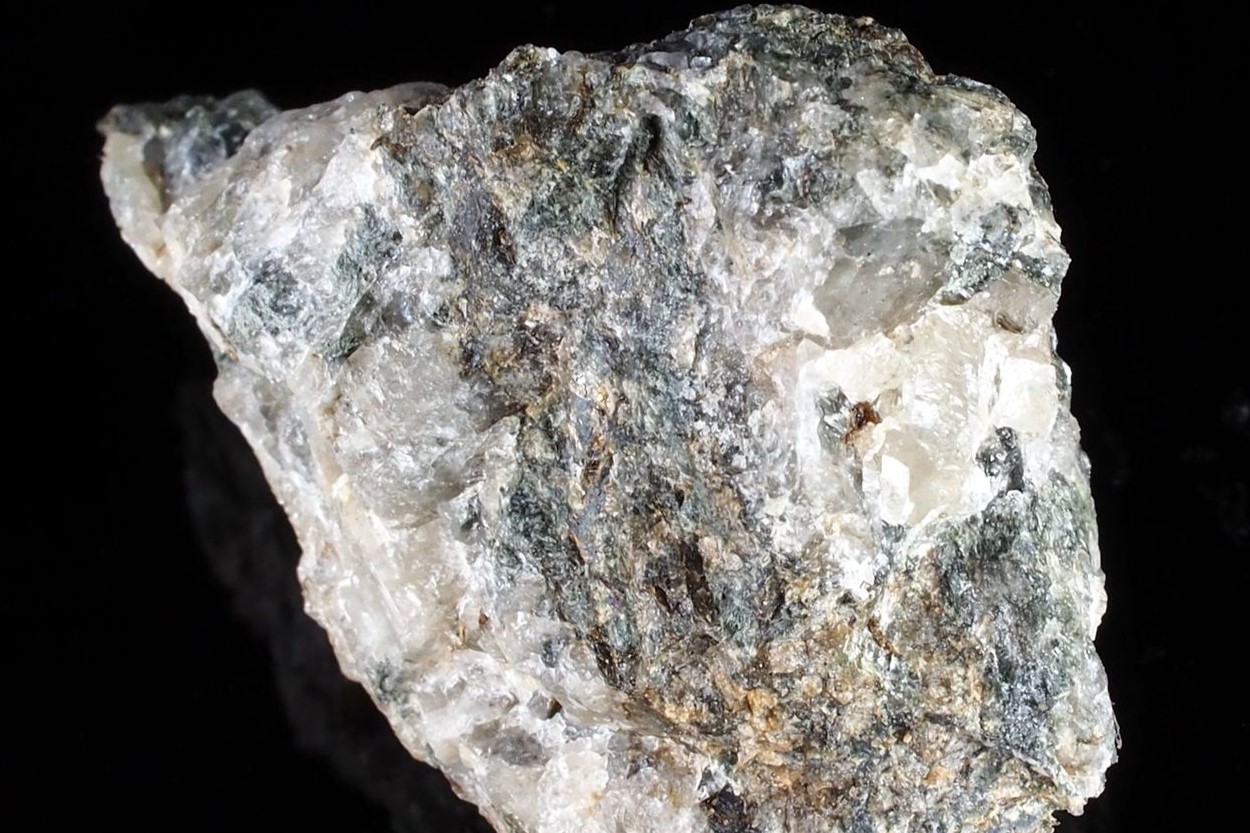
Nabalamprophyllite might sound like a mouthful, but this mineral holds some intriguing secrets. Found primarily in Russia, this rare mineral belongs to the perovskite group. Nabalamprophyllite is known for its unique crystal structure and striking appearance, often showcasing a rich brown or yellow hue. It forms in alkaline igneous rocks, making it a fascinating subject for geologists and mineral enthusiasts alike. But what makes Nabalamprophyllite truly special? Its composition includes elements like sodium, barium, and titanium, which contribute to its distinct properties. Ready to dive into more captivating facts about this mineral? Let's uncover 25 amazing tidbits that will leave you in awe of Nabalamprophyllite!
Key Takeaways:
- Nabalamprophyllite is a rare mineral with a complex chemical composition, making it valuable for geological studies and collectors. Its unique properties contribute to ongoing scientific intrigue and research.
- Found in alkaline igneous rocks, Nabalamprophyllite's physical and chemical characteristics provide valuable insights into the formation and evolution of these rocks. Its rarity and aesthetic appeal make it a prized addition to mineral collections and museums.
What is Nabalamprophyllite?
Nabalamprophyllite is a rare mineral that has intrigued geologists and mineral enthusiasts alike. Its unique properties and formation make it a subject of fascination. Let's dive into some interesting facts about this mineral.
-
Nabalamprophyllite is a sodium barium titanium silicate mineral. This complex chemical composition contributes to its rarity and unique properties.
-
It was first discovered in the Khibiny Massif on the Kola Peninsula in Russia. This region is known for its rich mineral diversity.
-
The mineral's name is derived from its chemical components: Na (sodium), Ba (barium), and Ti (titanium).
-
Nabalamprophyllite typically forms in alkaline igneous rocks. These rocks are rich in sodium and potassium, which are essential for the mineral's formation.
-
It is often found in association with other rare minerals such as lamprophyllite, eudialyte, and loparite.
Physical Characteristics of Nabalamprophyllite
Understanding the physical characteristics of Nabalamprophyllite can help in identifying and studying this mineral.
-
Nabalamprophyllite crystals are usually tabular or prismatic in shape. These distinct shapes make them easier to identify.
-
The mineral has a hardness of 5 on the Mohs scale. This means it is relatively soft compared to other minerals like quartz or diamond.
-
It exhibits a vitreous to pearly luster, giving it a shiny appearance when light reflects off its surface.
-
Nabalamprophyllite is typically yellow-brown to reddish-brown in color. These earthy tones are characteristic of the mineral.
-
It has a specific gravity of 3.5 to 3.6, which is a measure of its density compared to water.
Chemical Properties of Nabalamprophyllite
The chemical properties of Nabalamprophyllite reveal much about its formation and stability.
-
Nabalamprophyllite is a silicate mineral, meaning it contains silicon and oxygen in its structure.
-
The presence of titanium in its composition gives it unique properties, such as resistance to corrosion and high temperatures.
-
It is insoluble in water, which means it does not dissolve when exposed to moisture.
-
The mineral can undergo alteration when exposed to certain environmental conditions, leading to the formation of other minerals.
-
Nabalamprophyllite's chemical stability makes it an interesting subject for geological studies.
Uses and Applications of Nabalamprophyllite
Although rare, Nabalamprophyllite has some interesting uses and applications.
-
Due to its rarity, Nabalamprophyllite is primarily of interest to collectors and researchers rather than commercial industries.
-
It is often used in geological studies to understand the formation and evolution of alkaline igneous rocks.
-
The mineral's unique properties make it a subject of academic research, particularly in the fields of mineralogy and petrology.
-
Nabalamprophyllite can also be used as a reference material in laboratories for studying similar minerals.
-
Its aesthetic appeal makes it a valuable addition to mineral collections and museums.
Interesting Tidbits about Nabalamprophyllite
Here are some lesser-known facts that add to the intrigue of Nabalamprophyllite.
-
Nabalamprophyllite is considered a type locality mineral, meaning it was first described and identified in a specific location.
-
The Khibiny Massif, where it was discovered, is one of the largest alkaline igneous complexes in the world.
-
Nabalamprophyllite is often found in small quantities, making large specimens quite rare and valuable.
-
The mineral's discovery has helped advance the understanding of alkaline igneous rock formations.
-
Nabalamprophyllite's unique combination of elements makes it a subject of ongoing research, with scientists continually uncovering new insights about its properties and formation.
Nabalamprophyllite: A Fascinating Mineral
Nabalamprophyllite, with its unique properties and intriguing history, stands out in the world of minerals. Found primarily in Russia, this rare mineral captivates geologists and collectors alike. Its striking appearance, characterized by its brownish-yellow color and complex crystal structure, makes it a subject of study and admiration.
Beyond its beauty, nabalamprophyllite offers insights into geological processes and the Earth's history. Its formation in alkaline igneous rocks provides clues about the conditions and environments of ancient Earth. This mineral's rarity and distinctiveness highlight the diversity and complexity of our planet's geological makeup.
Whether you're a seasoned geologist or just someone with a curiosity for the natural world, nabalamprophyllite is a reminder of the wonders hidden beneath our feet. Keep exploring, and who knows what other fascinating discoveries await?
Frequently Asked Questions
Was this page helpful?
Our commitment to delivering trustworthy and engaging content is at the heart of what we do. Each fact on our site is contributed by real users like you, bringing a wealth of diverse insights and information. To ensure the highest standards of accuracy and reliability, our dedicated editors meticulously review each submission. This process guarantees that the facts we share are not only fascinating but also credible. Trust in our commitment to quality and authenticity as you explore and learn with us.
